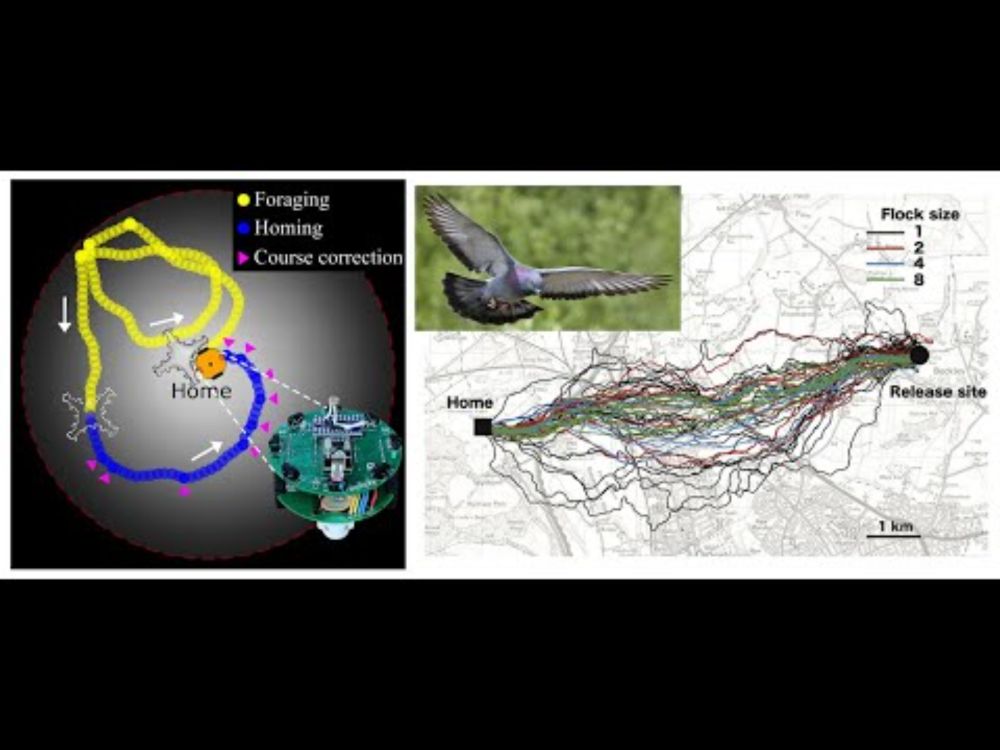Thrilled to announce that this work has been published in the journal Physical Review Letters. 😃
journals.aps.org/prl/abstract...
15.10.2025 17:33 — 👍 0 🔁 0 💬 0 📌 0
In another exciting development our new preprint is online:
www.biorxiv.org/cgi/content/...
This is the work of my brilliant graduate student Katerina Kourkoulou in collaboration with Maggie Liu and Arnold Mathijssen. Here is a video of the subject of our study:
18.09.2025 06:47 — 👍 53 🔁 17 💬 2 📌 1
Yes all well. Consider visiting IIT Bombay sometime in the future. Would love to know your cool research!
28.08.2025 12:04 — 👍 0 🔁 0 💬 0 📌 0
Congratulations Shailaja 🎉..my best wishes🙏🏼
26.08.2025 15:57 — 👍 0 🔁 0 💬 1 📌 0
Very happy that the first article from my postdoc work in the Tomancak lab is now published @PNAS! www.pnas.org/doi/10.1073/.... We studied the self-organization of actin in aggregates made from Hydra cells. Thread below (1/9)
06.08.2025 13:09 — 👍 142 🔁 41 💬 3 📌 4
Published in Langmuir today!
pubs.acs.org/doi/full/10....
04.08.2025 12:12 — 👍 1 🔁 0 💬 0 📌 0
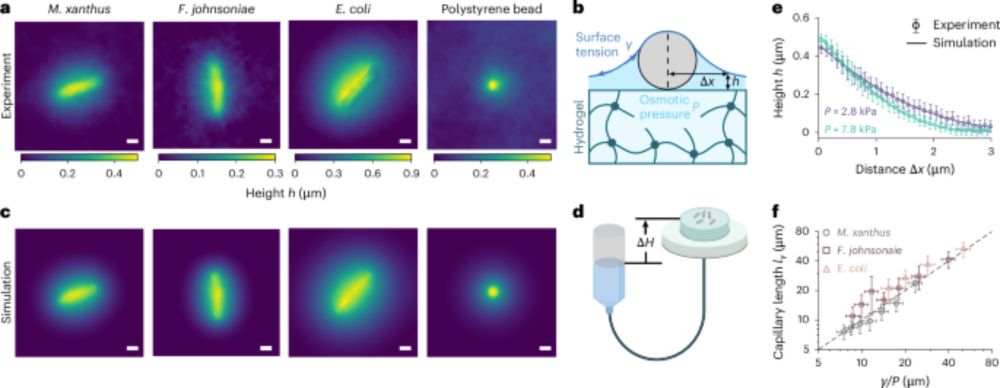
Capillary interactions drive the self-organization of bacterial colonies - Nature Physics
Bacteria tend to live in thin layers of water on surfaces. Now the capillary forces in these layers are shown to help organize the bacteria into dense packs.
Dreaming of a swimming pool? Bacteria are surrounded by water! Water capillary forces organize bacterial colonies into gas, nematic streams, or droplet states. New paper @natphys.nature.com led by Matt Black and Chenyi Fei, with Ned Wingreen and Josh Shaevitz!
www.nature.com/articles/s41...
02.08.2025 14:59 — 👍 56 🔁 13 💬 3 📌 1
Nematic ordering via vertical stratification in drying clay nanotube suspensions
Preprint alert 📣! We provide an experimental protocol to align clay nanotubes over the entire dried deposit in spite of huge size-polydispersity. Experiments by my postdoc Arun Dadwal. Supported by @iitbombay.bsky.social
arxiv.org/html/2505.03...
07.05.2025 18:05 — 👍 0 🔁 0 💬 0 📌 1
(6/6) We quantify RT motion in terms of tumbling rate and show its systematic variation as a function of various experimental parameters. Our theoretical model reproduces experiments and elucidates the physics of underlying phenomena. More details in the preprint. Thanks😃
04.02.2025 05:47 — 👍 1 🔁 0 💬 0 📌 0
(5/6) Key to this RT motion is our robot's rolling-without-slipping, inertia-less active motion, which is expected in microswimmers. To confirm this, we used a slippery surface coated with coconut oil and found that the sudden tumble events smoothened out and vanished completely.
04.02.2025 05:47 — 👍 1 🔁 0 💬 1 📌 0
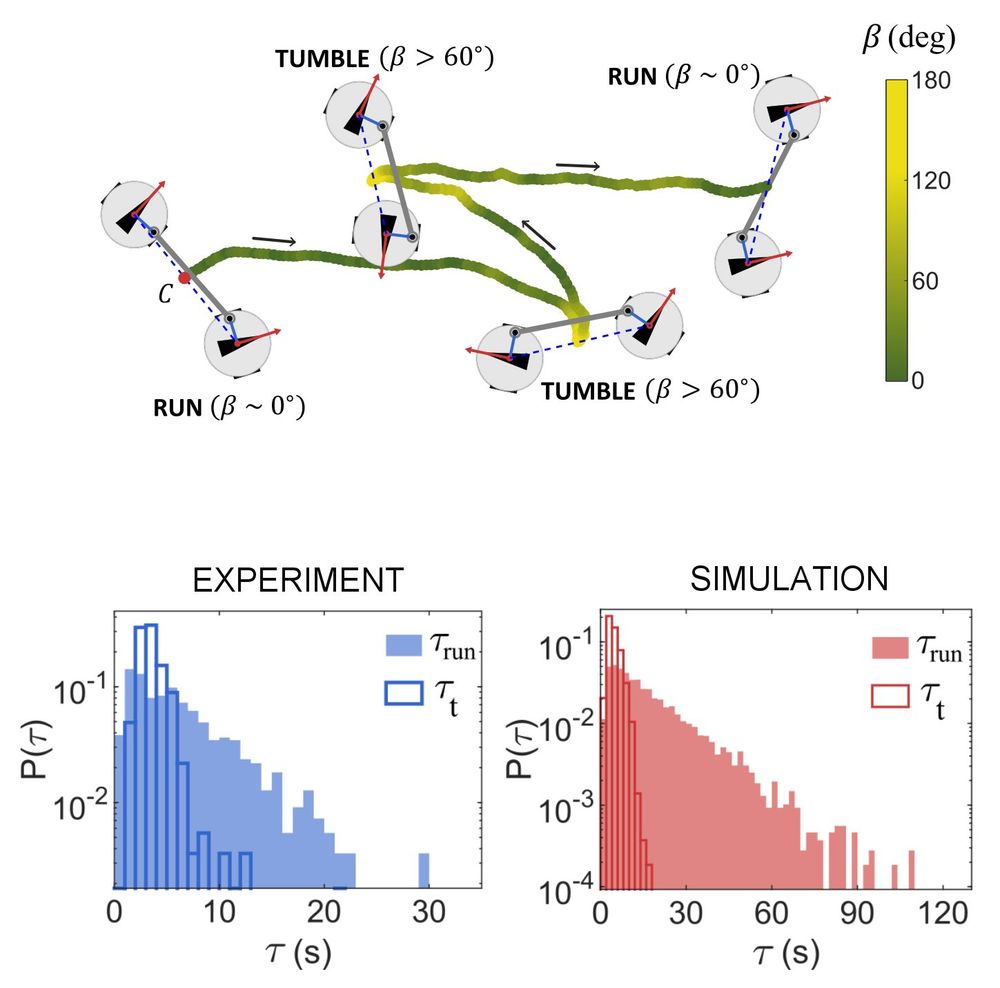
(4/6) When robots are programmed to execute overdamped active Brownian (AB) motion, voila, RT motion emerges, featuring abrupt tumbling events and exponential run-time distributions.
04.02.2025 05:46 — 👍 1 🔁 0 💬 1 📌 0
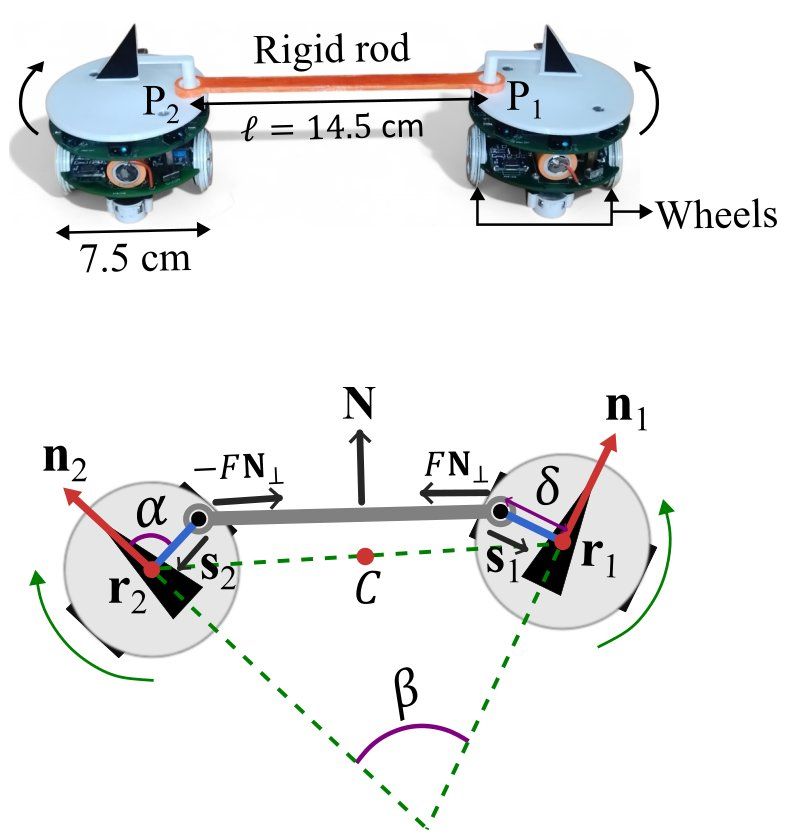
(3/6) Inspired by that, we create a robotic organism: two self-propelled robots connected by a rigid rod. Here, robots mimic flagella, and the rod acts as the organism's body. The rod rotates freely in a plane, with its ends pivoted at mirror-symmetric points on each robot.
04.02.2025 05:45 — 👍 1 🔁 0 💬 1 📌 0

a drawing of a blue bacteria with purple circles around it and the words addgene below it
ALT: a drawing of a blue bacteria with purple circles around it and the words addgene below it
(2/6) Microswimmers like bacteria and algae use active units, called cilia or flagella, to attain motility in a low Re environment. Flagella undergo a series of synchronous and asynchronous beating cycles to produce straight trajectories (runs) and sudden random turns (tumbles).
04.02.2025 05:45 — 👍 1 🔁 0 💬 1 📌 0
(1/6) 📢Excited to share our latest work in collaboration with @harshIITMandi's group at IIT Mandi on an artificial robotic system 🤖, in experiment and theory, mimicking run-and-tumble (RT) motion seen in microorganisms 🦠. 🧵⏬
arxiv.org/abs/2502.01257
04.02.2025 05:43 — 👍 6 🔁 0 💬 1 📌 1
YouTube video by RnD @ IITB
Self-Propelling Robot Reveal the Physics Behind Animal Homing
A short video highlighting our research on the physics of homing behavior in animals, recently published in PRX Life journal.
youtu.be/Pr0UdzK7kyg?...
27.01.2025 09:17 — 👍 1 🔁 0 💬 0 📌 0
I do the same and I have also seen similar ones. And yes my primary objective is also that they go through the course content and at least learn something in the process 😃
20.12.2024 02:26 — 👍 3 🔁 0 💬 0 📌 0
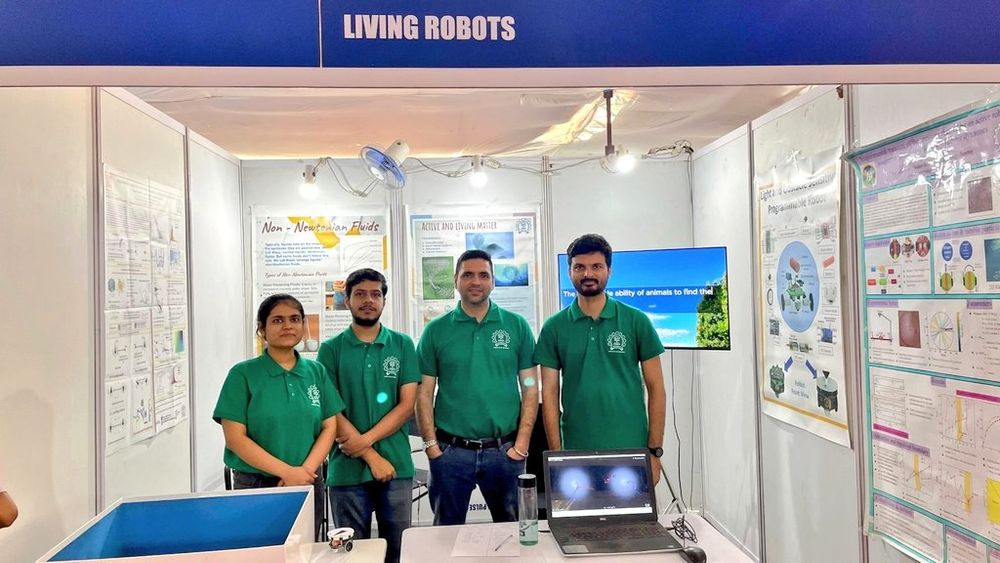

As part of the institute's outreach program #TechConnect #TechFest2024, our group showcased a hands-on experience with our active robots, demonstrating how we engineer them to uncover the physics of #LivingMatter and #ActiveMatter @IITBombay
20.12.2024 02:10 — 👍 3 🔁 1 💬 0 📌 0
Congratulations Shila..👏🏼
17.11.2024 17:50 — 👍 1 🔁 0 💬 0 📌 0
Add me also. Thank you 😊
17.11.2024 17:44 — 👍 1 🔁 0 💬 0 📌 0
Add me as well. Thanks :)
15.11.2024 11:28 — 👍 1 🔁 0 💬 1 📌 0
(Re)searcher of non equilibrium steady states living at the interface of physics and biology. Leading the Living Patterns lab @EPFL
https://www.epfl.ch/labs/lpl/
Incoming Assistant Prof @MBISg, NUS | Interested in mechanobiology | Postdoc, Gardel Lab @UChicago | Schmidt AI in Science and AHA Postdoc | Previously Marie Curie and FRM PhD, Etienne-Manneville Lab @Institut Pasteur
Unofficial bot by @vele.bsky.social w/ http://github.com/so-okada/bXiv https://arxiv.org/list/cond-mat.soft/new
List https://bsky.app/profile/vele.bsky.social/lists/3lim7ccweqo2j
ModList https://bsky.app/profile/vele.bsky.social/lists/3lim3qnexsw2g
At KITP on the UC Santa Barbara campus, researchers in theoretical physics and allied fields collaborate on questions at the leading edges of science.
www.kitp.ucsb.edu
Theoretical biophysicist who loves to talk about science.
Homepage https://www.thphys.uni-heidelberg.de/~biophys/
we highlight the latest articles that bring together physics and biology.
(maintained by @shuzokato.bsky.social)
Physicist synergistically exploring slender soft matter in synthetic and biological systems. Postdoc at @bhamlalab.bsky.social in @GeorgiaTech
Interested in modelling and control of complex dynamical systems, fluid dynamics, reduced order modelling, and SciML
Postdoc, UW Madison; PhD - Mechanical Engineering, Clemson University;
jbuzhar.github.io
Applied Mathematician working on Modeling and Simulations of problems in Biological and Soft Active Matter. Views here are my own.
Experimental physicist, dynamics of complex and disordered systems.
https://sites.google.com/view/complextau/home
Prof. of Physics, Cell Biology and Molecular Engineering @ UChicago. Passionate about all the squishy matter driving dynamics and function from sub-cellular to tissue scales.
Theoretical physicist interested in the physics of living systems and statistical physics. Professor at LMU Munich. Passionate about emergent phenomena and interdisciplinary research.
https://www.theorie.physik.uni-muenchen.de/lsfrey/
Physicist fascinated by biology, trying to understand how cells work. Also: public engagement, science and culture, puzzles.
Soft Matter and Biological Physics
Assistant Professor @UCSDPhySci @UCSDPhysics. Interest in how complex dynamics arise in active living and robotic matter. Lab website: https://www.tzerhan.com/
BPPB is a weekly virtual seminar series covering topics in biological physics, physical biology, and everywhere in between. We are excited to be joining bluesky! Please visit https://sites.google.com/view/bppb-seminar for more information.
Serra Group at UCSD Physics: Nonlinear Dynamics & Physics of Living Systems.
http://www.mattiaserra.com
Prev. |@SchmidtFellows @Harvard, PhD @ETH_en
Biological physics and disordered systems • From 🇦🇷, currently working in 🇩🇪 supported by 🇪🇺 • She/her
Physicist interested in how matter comes alive.








